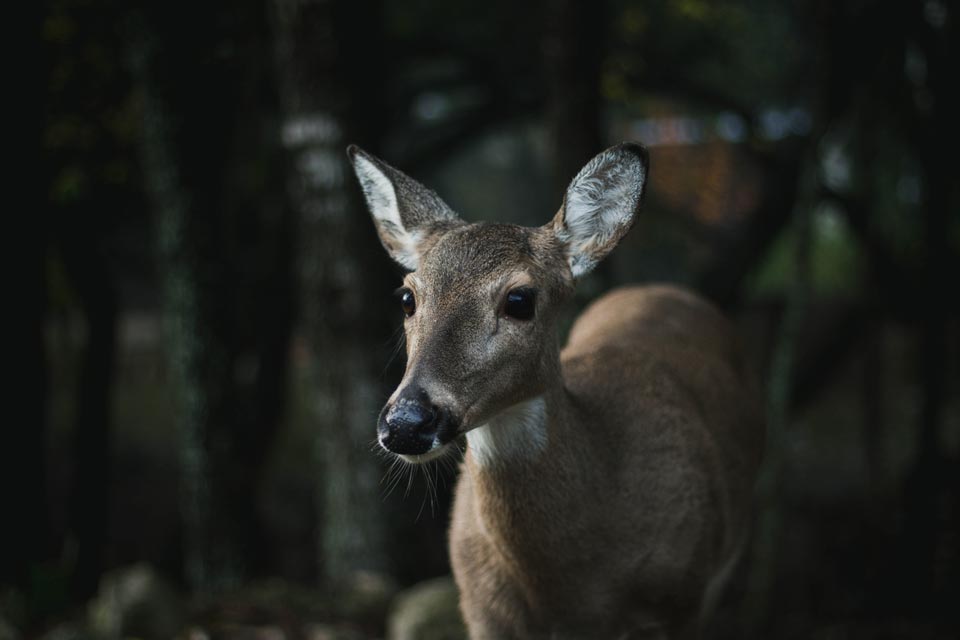I have always been fond of the American beech (Fagus grandifolia). The bark is a striking silver gray making it easy to spot in the woods. Unlike other tree species, beech bark keeps its youthful appearance throughout its life. No deep crevasses or wrinkles will ever be found no matter how old or big it is. It’s like the Paul Newman of trees.
Have you ever hugged a beech tree? The bark feels like it has been shrink-wrapped to the wood beneath! Taut and smooth. The next time you’re out in the woods, give it a try. It’s a lot more welcoming than an oak or maple.
Speaking of oak and maple, only white oak and sugar maple live longer – in fact the oldest known beech trees were found in Pennsylvania clocking in at more than 366 years old.
Beech, like oak, produce hard mast (a fancy word for wildlife food, soft mast is the term for foods like blackberries, black cherry fruit, etc.). Beechnuts are nutritious and tasty (even for humans!).
How do you know when a beech tree is mature enough to produce mast? Look for bear nests. Yes, you read that correctly. Read the smooth bark for graffiti first – claw marks are forever on beech bark. If you see them, look up. After Yogi climbs the tree and finds a nice place to perch, he reachs out, breaks off a branch, eats the nuts, then stuffs the broken branch underneath him. A bear-sized appetite produces a bear-sized “nest” in the beech tree.
In the past couple of weeks, I’ve had different people ask me about all the beech seedlings they’ve seen in the woods. It’s funny how that happens. Similar questions from unrelated incidents from completely different audiences. Serendipity.
“Is this a sign the forest is recovering from past deer browsing?”
“When will these trees be big enough to produce mast?”
Unfortunately, the answers to these questions are NO and NEVER.
A disease is killing our beech trees. It’s actually a fascinating disease complex dating back to 1849 when it was first seen in Europe. By 1890, the disease had made its way to Nova Scotia. It has been spreading across North America ever since.
The beech scale (Cryptococcus fagisuga), a small insect about 1 millimeter (0.04 inches) long, feeds on the bark cells of the tree. Perhaps sucking the essence of the tree’s vitality and beauty. To complete the stereotype, there are no male beech scales – only females that reproduce via parthenogenesis.
The beech scales’ quest for eternal youth does not kill the tree, but instead opens the door for another invader.
Through this open door walk two species of fungi, N. coccinea var. faginata and N. galligena. It is they who kill the beech. In an ironic twist, the fungi eventually make the tree inhospitable to the beech scale. The “she’s” are ousted…their fountain of youth evaporated.
But what about all the beech seedlings?
Those “seedlings” are actually root suckers sent up by the dying adult trees as a last gasp. If you look, they are clustered around a larger tree which is, in fact, clinging to life.

If you inspect these larger trees, you will notice the damage to the bark. It’s not smooth and taut anymore. It is cracked and wrinkled unable to fend off ferocious fungi and other fiendish organisms.

These seedlings are doomed, never living long enough to become a mast-producing tree. Which means no more black bear nests. But bears aren’t the only ones weeping at the death of the beech – squirrels, wild turkey and many other animals all mourn the loss of the beechnut as well.
But what about deer? Maybe the seedlings could feed the deer? Wishful thinking. American beech is not a preferred species of browse for white-tailed deer.
Beech seedlings are also VERY resilient to deer browsing even if deer do partake in a snack. Why do I mention this? It means the presence of beech brush provides no indication of the intensity of deer browsing. It may look like the forest is recovering but looks can be deceiving – you have to look at other plant species to assess deer browsing intensity.
Dense stands of beech brush shade out many other species of tree seedlings and herbaceous plants that could provide food for deer and other wildlife. Triple whammy!
So all is not as it seems. What looks like a regenerating forest is really the consequence of a dying species.
It’s why Aldo Leopold wrote, “One of the penalties of an ecological education is that one lives alone in a world of wounds.”
The next time you see a healthy beech tree, feel it’s bark. Appreciate its simple beauty. They probably won’t be around forever. And if you dare, give it a hug for me.
-Duane Diefenbach
If you would like to receive email alerts of new blog posts, subscribe here.
And Follow us on Twitter @WTDresearch
